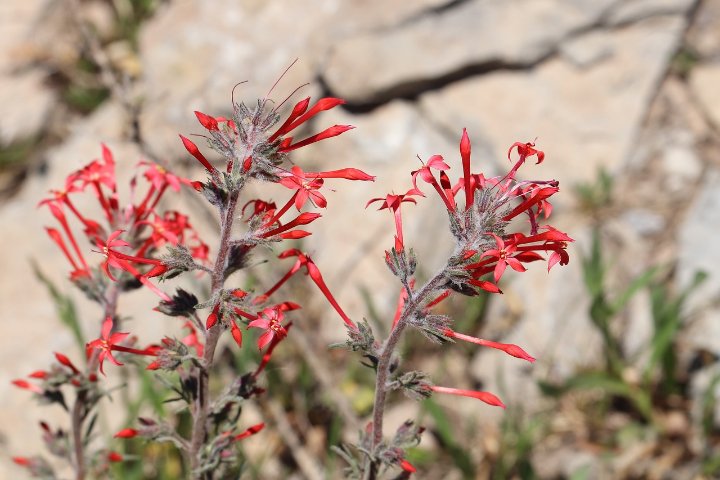Ipomopsis rubra, commonly known as Standing Cypress, is a stunning wildflower native to the southeastern United States. With its vibrant red blooms and slender, towering stems, this perennial plant adds a touch of elegance to any garden landscape.
Best Standing Cypress Varieties
| Image | Name | Rating | Shop |
|---|---|---|---|
 | Standing Cypress Seeds – Ipomopsis rubra |  | |
 | David’s Garden Seeds Flower Native Texas Standing Cypress |  |
Ipomopsis rubra (Standing Cypress) Hardiness Zones
Standing Cypress thrives in USDA hardiness zones 6-9, where it can tolerate a wide range of climatic conditions. Whether you live in a temperate region with mild winters or a hotter, more humid climate, you can enjoy the beauty of Ipomopsis rubra in your garden.
How Much Sun Do Ipomopsis rubra (Standing Cypress) Need
Standing Cypress prefers full sun, requiring at least six to eight hours of direct sunlight each day to thrive. Plant them in a location where they can receive ample sunlight and bask in its warmth. Adequate sunlight ensures robust growth and abundant blooming throughout the growing season.
Ipomopsis rubra (Standing Cypress) Soil Requirements
When it comes to soil, Standing Cypress thrives in well-drained soil with a mix of chalk, loam, and sand. Aim for a slightly acidic to neutral soil pH to provide optimal growing conditions for these resilient wildflowers. Proper soil preparation ensures healthy root development and vibrant blooms.
Ipomopsis rubra (Standing Cypress) Plant Spacing
Standing Cypress plants typically reach a height of 18 to 24 inches and spread to similar dimensions. When planting Standing Cypress, space them accordingly to allow for adequate air circulation and room for growth. Proper spacing ensures that each plant has enough space to flourish and showcase its striking red flowers.
Ipomopsis rubra (Standing Cypress) Temperature Requirements
Standing Cypress is a summer perennial, thriving in warm climates and tolerating temperatures down to zone 6. While it can withstand a range of temperatures, it may struggle in extreme heat or cold. Aim to provide consistent temperatures within its preferred range to promote healthy growth and flowering.
Ipomopsis rubra (Standing Cypress) Fertilizer Requirements
As a native wildflower, Standing Cypress requires minimal fertilizer to thrive. In most cases, the nutrient-rich soil and organic matter provide sufficient nutrients for healthy growth and blooming. Avoid over-fertilizing, as this can lead to excessive foliage growth at the expense of flowers.
Ipomopsis rubra (Standing Cypress) Water Requirements
Standing Cypress is drought-tolerant once established, making it an excellent choice for water-wise gardens. While young plants may require regular watering to help establish their roots, mature Standing Cypress plants typically require minimal irrigation. Water them sparingly, allowing the soil to dry out between waterings.
Ipomopsis rubra (Standing Cypress) Humidity Requirements
Native to the southeastern USA, Standing Cypress is well-adapted to humid weather conditions. Unlike some other plants that may struggle in high humidity, Standing Cypress thrives in moist air and can withstand periods of humid weather without issue.
Ipomopsis rubra (Standing Cypress) Pests and Diseases
Standing Cypress is relatively disease and pest-free, making it a low-maintenance addition to any garden. However, it’s essential to monitor your plants regularly for signs of disease or pest infestations and take appropriate measures to control them if necessary. With proper care and attention, Standing Cypress can remain healthy and vibrant for years to come.
In conclusion, growing and caring for Ipomopsis rubra (Standing Cypress) allows gardeners to enjoy the beauty of native wildflowers in their landscape. By providing full sun, well-drained soil, and minimal water and fertilizer, you can cultivate healthy Standing Cypress plants that add color and elegance to your garden. With their resilience and striking red blooms, Standing Cypress is sure to become a favorite among gardeners of all skill levels.











